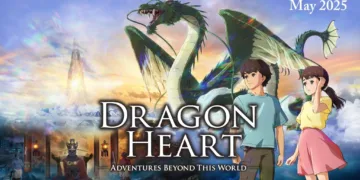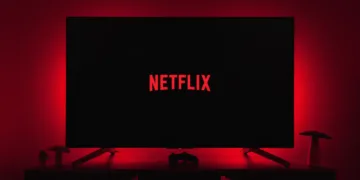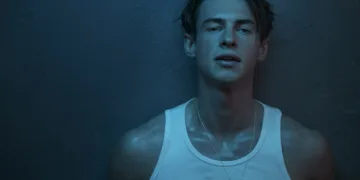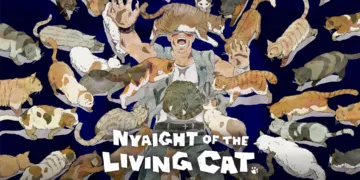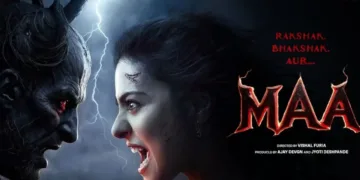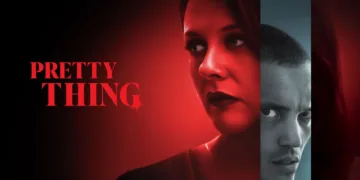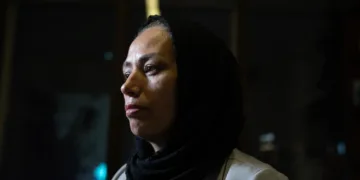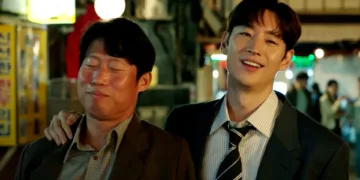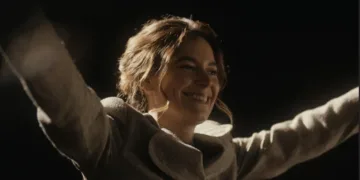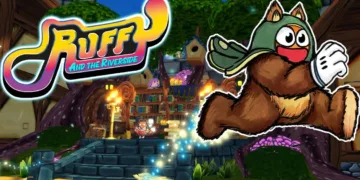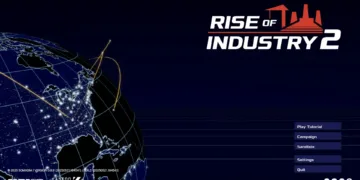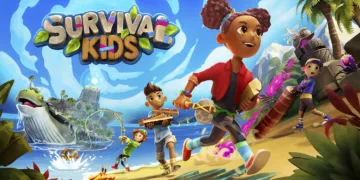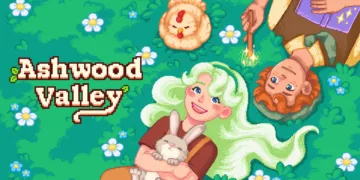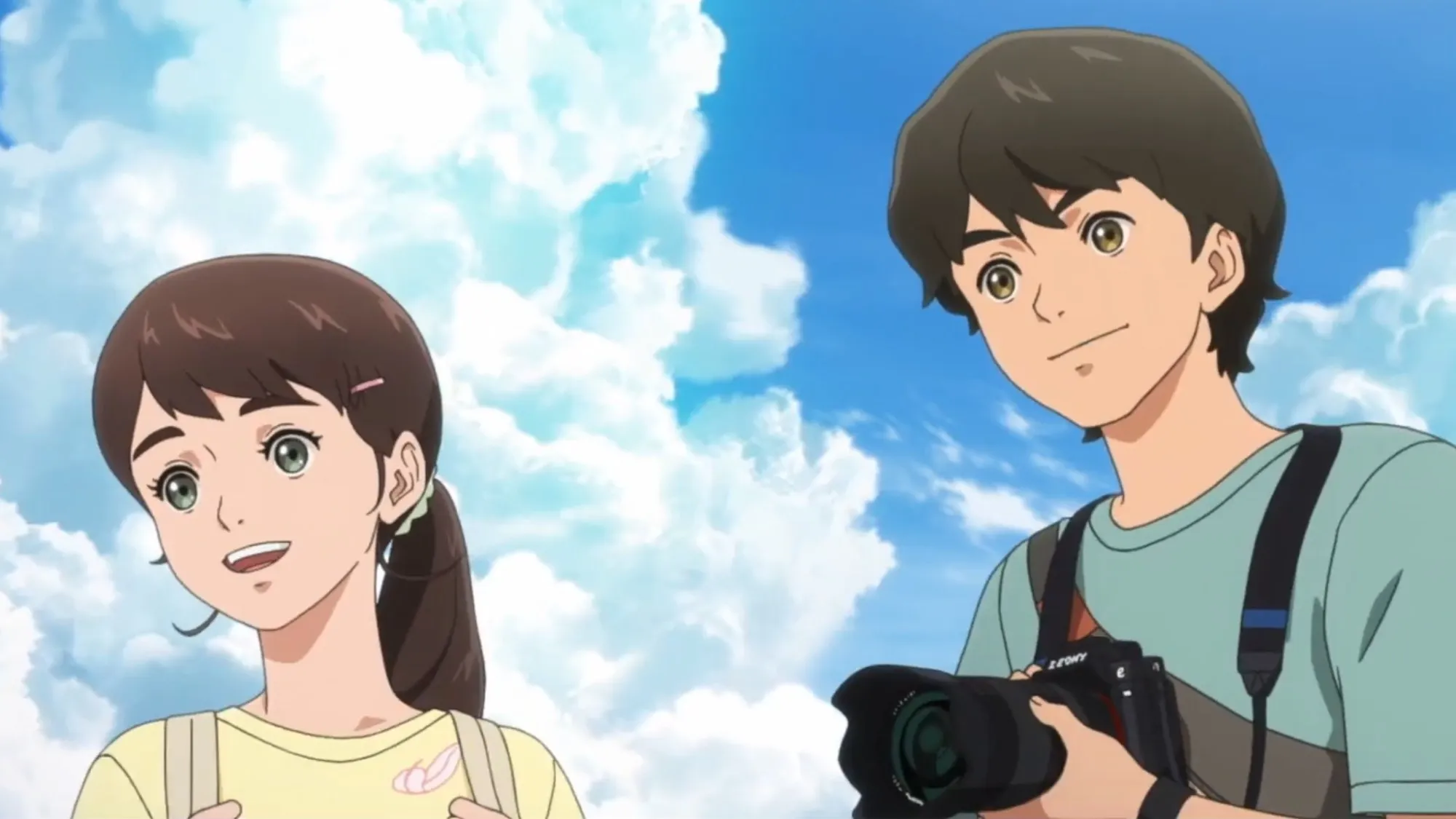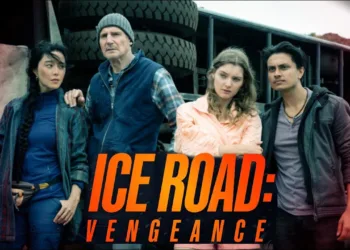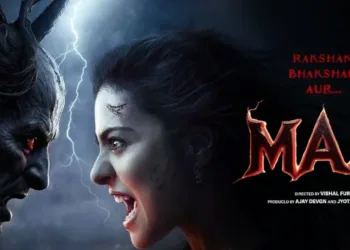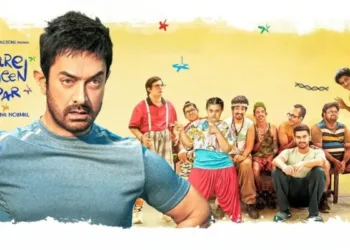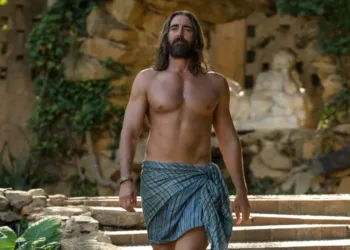A summer visit to the countryside takes a sharp, metaphysical turn in Isamu Imakake’s Dragon Heart: Adventures Beyond This World. The story centers on two young cousins, Ryusuke and Tomomi, whose idyllic afternoon by the Anabuki River ends in a tragedy that sweeps them from the world of the living. Their apparent deaths, however, are not an end but a violent transition.
Rescued from the torrent by a silent, powerful dragon, they are thrust into a bewildering spirit world. Here, an old guide informs them that a path back to life exists, but it is not easily won. They must traverse this strange new reality to discover their true mission in life.
The film immediately establishes itself as a unique animated fantasy, one that uses the structure of a coming-of-age story as a vessel for a journey into spiritual realms influenced by a fascinating synthesis of global religious traditions, from Dantean hellscapes to Hindu cosmology. It is an adventure into an elsewhere, where the stakes are nothing less than existence itself.
A Road Movie Through Modern Damnation
The film’s narrative unfolds as a metaphysical road movie, guiding its young protagonists through a series of increasingly disturbing afterlives. These are not ancient, fire-and-brimstone hells; they are stark reflections of contemporary anxieties and historical traumas.
Ryusuke and Tomomi find themselves in an eerie town trapped in a violent vision of 1960s Japan, followed by a nightmarish hospital where unethical experiments are performed with chainsaws. Later, they witness realms born from terrorism and human trafficking. This “hell tour” functions as a powerful allegory, grounding its fantastical elements in tangible, modern sins.
The constant peril maintains a thriller-like intensity, pushing the junior high students to mature with brutal speed. Their journey through these dark reflections of human society forces an awareness of suffering and moral complexity.
Key encounters, like their audience with the bureaucratic but oddly humorous King Enma in his courtroom, reveal the karmic logic underpinning these torments. The subsequent kidnapping of Tomomi by a menacing Snake God injects a classic quest element, sharpening the focus of their desperate odyssey.
The Aesthetics of the Afterlife
HS Pictures Studio brings the spirit world to life with a dynamic and fluid animation style. The movement is particularly impressive in high-tension sequences and in the rendering of the dragon, whose silent presence is given weight and personality through its graceful, powerful motions.
The art direction masterfully creates a visual dialogue between the grotesque and the sublime. Each level of hell has a distinct, oppressive aesthetic that contrasts sharply with the vibrant serenity of spiritual safe havens like the temple of Shambhala and the idyllic Peachtree Land.
Character design shines brightest in the varied and imaginative forms of the gods, spirits, and demons, which draw from a deep well of cultural iconography. The auditory experience complements the visuals effectively. The score is beautiful, and while many vocal tracks fit the familiar anime style, the final song leaves a particularly strong impression.
In the English dub, the voice work feels authentic; Zach Aguilar’s Ryusuke and Ren Holly Liu’s Tomomi convey youthful vulnerability and growing resolve, while Brook Chalmers’s King Enma provides moments of welcome levity.
Forging a Path Through Faith and Effort
At its foundation, the film is a meditation on the search for purpose. It confronts ideas of karmic retribution and redemption head-on, treating them not as abstract concepts but as tangible forces shaping the characters’ reality.
The narrative explicitly incorporates Hindu cosmology in its final act, a fascinating choice that layers another cultural perspective onto its Japanese and Western-inspired framework. This synthesis suggests a path to transcendence that is not passive; it requires both faith and strenuous personal effort. The film’s greatest strength may be its confidence in its audience.
It refuses to talk down to younger viewers, presenting mature themes of sin, death, and atonement with a directness that is both startling and respectful. It trusts that the viewer can handle these complex ideas, making the story a thoughtful piece of entertainment that lingers long after the credits roll.
Dragon Heart: Adventures Beyond This World is a 119-minute Japanese animated fantasy film released theatrically in Japan on May 23, 2025, and later had a limited U.S. release on June 6, 2025 via Freestyle Digital Media.
Full Credits
Director: Isamu Imakake
Writers: Ryuho Okawa
Producers and Executive Producers: Ryuho Okawa
Cast: Zach Aguilar, Ren Holly Liu
Composer: Yuichi Mizusawa
The Review
Dragon Heart: Adventures Beyond This World
Dragon Heart: Adventures Beyond This World is an ambitious animated feature that succeeds more than it stumbles. It weaves a compelling, if sometimes heavy-handed, narrative about purpose and redemption by blending modern anxieties with a fascinating mix of global spiritualities. While the explicit religious messaging in the final act may not resonate with everyone, the film's willingness to trust its audience with mature themes, combined with its striking visuals and tense, atmospheric journey through a series of contemporary hells, makes it a deeply memorable and thought-provoking experience.
PROS
- Visually creative and distinct art direction, especially in the design of the various spiritual realms.
- A compelling and tense "metaphysical road movie" narrative structure.
- Bravely tackles mature themes of sin, suffering, and purpose without oversimplifying them for a younger audience.
- Intriguing blend of different cultural and religious mythologies.
CONS
- The overt religious messaging, particularly toward the end, can feel dogmatic.
- Pacing can feel slightly uneven as it shifts from a dark thriller to a more direct spiritual lesson.
- The human character designs are less refined than the imaginative non-human entities.
